Sclerochiton harveyanus
| Botanical Name | Sclerochiton harveyanus |
|||||||||||||||||||||
| Family | Acanthaceae - The acanthus family. |
|||||||||||||||||||||
| Pronunciation | skler-oh-KY-ton har-vee-AY-nus |
|||||||||||||||||||||
| Common Name(s) |
English: Blue Lips
Afrikaans: Blou-lippe
IsiXhosa: isiThibothi
siSwati: mazabuka
|
|||||||||||||||||||||
| Plant Group |
|
|||||||||||||||||||||
| Plant Size |
|
|||||||||||||||||||||
| Position |
|
|||||||||||||||||||||
| General Information |
|
|||||||||||||||||||||
| Specific Information | Sclerochiton harveyanus is a rounded shrub, multi-stemmed and dense, with thin, lax stems. The small, glossy leaves are somewhat leathery with noticeably yellowish veins, giving the impression of being slightly variegated. Usually a shrub, it will on occasion scramble into surrounding vegetation or grow into a small tree. In suitable conditions the shrub attains a spread of up to 3 m. The flowers are bound to attract attention with their periwinkle colouring and unusual shape. The plant flowers generously and over a reasonably long period of time. The quantity of fruits produced indicates the frequency with which the plant is visited by pollinating insects, which in turn will encourage insect-eating birds to visit the garden. The fruiting capsule is unexpectedly large in relation to the size of the flower, and when ripe, will burst and eject the seeds quite forcefully. Blue lips grows fast and flowers while young. |
|||||||||||||||||||||
| Ad Break | ||||||||||||||||||||||
| Flowers | ||||||||||||||||||||||
| Description | single, smallish (2 cm) flower with a deeply cleft 5-lobed lip, held in the leaf axils towards the ends of shoots (Further north in Zimbabwe and Zambia, the flowers are more likely to be pink.) |
|||||||||||||||||||||
| Season |
|
|||||||||||||||||||||
| Colour |
|
|||||||||||||||||||||
| Growth Rate |
|
|||||||||||||||||||||
| Plant Uses |
|
|||||||||||||||||||||
| Distribution and Habitat | from the Eastern Cape to KwaZulu-Natal, Mpumalanga, and Limpopo, as well as Swaziland, central Mozambique, eastern parts of Zimbabwe and Zambia, on the edge and in the understory of evergreen and riverine forests |
|||||||||||||||||||||
| Planting Suggestions | When choosing a site for Sclerochiton harveyanus, particular attention should be paid to its natural forest habitat. It needs a shaded position, well-drained soil rich in nutrients, a thick layer of mulch and a moderate amount of water. Over-watering or incorrect placement can result in insect infestations. A seasonal application of fertiliser is suggested to aid growth, prevent yellowing of leaves and ensure an abundance of flowers. Apply during the growing season. Blue lips grows exceptionally easily from spring cuttings of semi-hard wood and can also be grown from seed sown in spring. It responds well to light trimming during spring and after flowering in late autumn. |
|||||||||||||||||||||
| Lorraine's Garden Notes | The specimen in the photo above is in no way indicative of this shrub when grown in a suitable environment. Although under 80% shade netting, the soil and lack of moisture in my garden does not do this lovely shrub justice. I intend to plant one in a container so that it can be given a greater chance of thriving. If anyone can provide me with a picture of this shrub showing its true beauty, I would be most appreciative. |
|||||||||||||||||||||
| Medicinal Uses | No data found. |
|||||||||||||||||||||
| Ad Break | ||||||||||||||||||||||


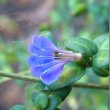
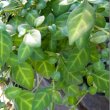
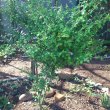
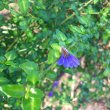
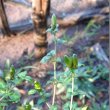



Discuss this plant
Share knowledge, ask a question or give an experience.